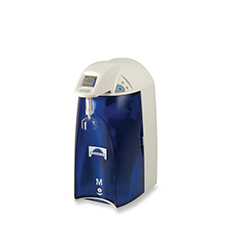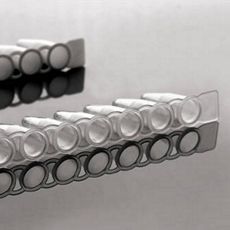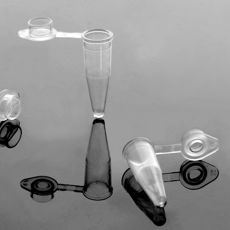Chromogenic Endotoxin Testing Reagents
Pyrochrome is a versatile quantitative reagent that is used to perform kinetic or endpoint assays. It is a sensitive and flexible reagent that can be used for testing in compliance with the USP, EP and JP bacterial endotoxins test chapter. Pyrochrome is offered with either Pyrochrome Buffer or for endotoxin-specific testing, with Glucashield® Buffer. Pyrochrome can be used with the new Pyros Kinetix® Flex tube reader at a 1:1 and economical 4:1 ratio.
Pyrochrome can be used for a wide variety of endotoxin tests, ranging from standard water testing to samples requiring high sensitivity, such as intrathecal products and those requiring high dilutions to overcome interference.
It is also offered in a diazo kit for endpoint tests. (The diazo reagents shift the absorption spectrum making it especially useful for testing samples with color interference.)
Product Sensitivity
The sensitivity for chromogenic assays is determined by the lowest standard concentration on the standard curve used for the assay. The maximum sensitivity of Pyrochrome is 0.001 EU/mL when run in Pyros Kinetix Flex tube reader or incubating microplate reader with Glucashield Buffer.
Sample to Lysate Ratio
In the Pyros Kinetix Flex tube reader, Pyrochrome can be used at an economical ratio of 4:1 using 50 µL of reagent per well or at 1:1 using 100 µL/well. In a microplate reader, the reagent is used at a ratio of 1:1 and a volume of 50 µL/well (60 tests/vial) or 100 µL/well (30 tests/vial).
Test Performance
The Pyrochrome/sample mixture is incubated at 37±1°C and read in a microplate reader equipped with a 405–410 nm filter or 540–550 nm filter for diazo method. The time of incubation is dependent on the lowest standard concentration in the standard curve. Software is used to construct the standard curve and calculate the endotoxin concentrations.
Key Features
- Pyrochrome® sets the standard for quality and redefines the way chromogenic reagents should perform
- Can achieve a maximum sensitivity of 0.001 EU/mL
- Option to use a sample to lysate volume ratio of 4:1 or 1:1
- Highly cost effective chromogenic reagent
- Use of polynomial regression for calculations







 Specializing in chromogenic and turbidimetric reagent technologies, Associates of Cape Cod, Inc. (ACC) has been a global leader in endotoxin and (1→3)-ß-D-glucans detection products and services for more than 45 years. ACC pioneered LAL testing methodology and was the first FDA licensed company to manufacture LAL reagents; ACC has grown to be an internationally recognized leader in endotoxin detection.
Specializing in chromogenic and turbidimetric reagent technologies, Associates of Cape Cod, Inc. (ACC) has been a global leader in endotoxin and (1→3)-ß-D-glucans detection products and services for more than 45 years. ACC pioneered LAL testing methodology and was the first FDA licensed company to manufacture LAL reagents; ACC has grown to be an internationally recognized leader in endotoxin detection.










